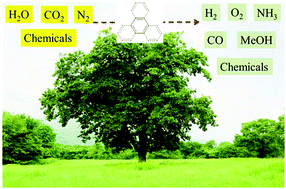Beyond C3N4 π-conjugated metal-free polymeric semiconductors for photocatalytic chemical transformations
Abstract
Photocatalysis with stable, efficient and inexpensive metal-free catalysts is one of the most promising options for non-polluting energy production. This review article covers the state-of-the-art development of various effective metal-free polymeric photocatalysts with large π-conjugated units for chemical transformations including water splitting, CO2 and N2 reduction, organic synthesis and monomer polymerisation. The article starts with the catalytic mechanisms of metal-free photocatalysts. Then a particular focus is on the rational manipulation of π-conjugation enlargement, charge separation, electronic structures and band structures in the design of metal-free polymeric photocatalysts. Following the design principles, the selection and construction of functional units are discussed, as well as the connecting bonds and dimensions of π-conjugated polymeric photocatalysts. Finally the hot and emerging applications of metal-free polymeric photocatalysts for photocatalytic chemical transformations are summarized. The strategies provide potential avenues to address the challenges of catalyst activity, selectivity and stability in the further development of highly effective metal-free polymeric photocatalysts.



 Please wait while we load your content...
Please wait while we load your content...